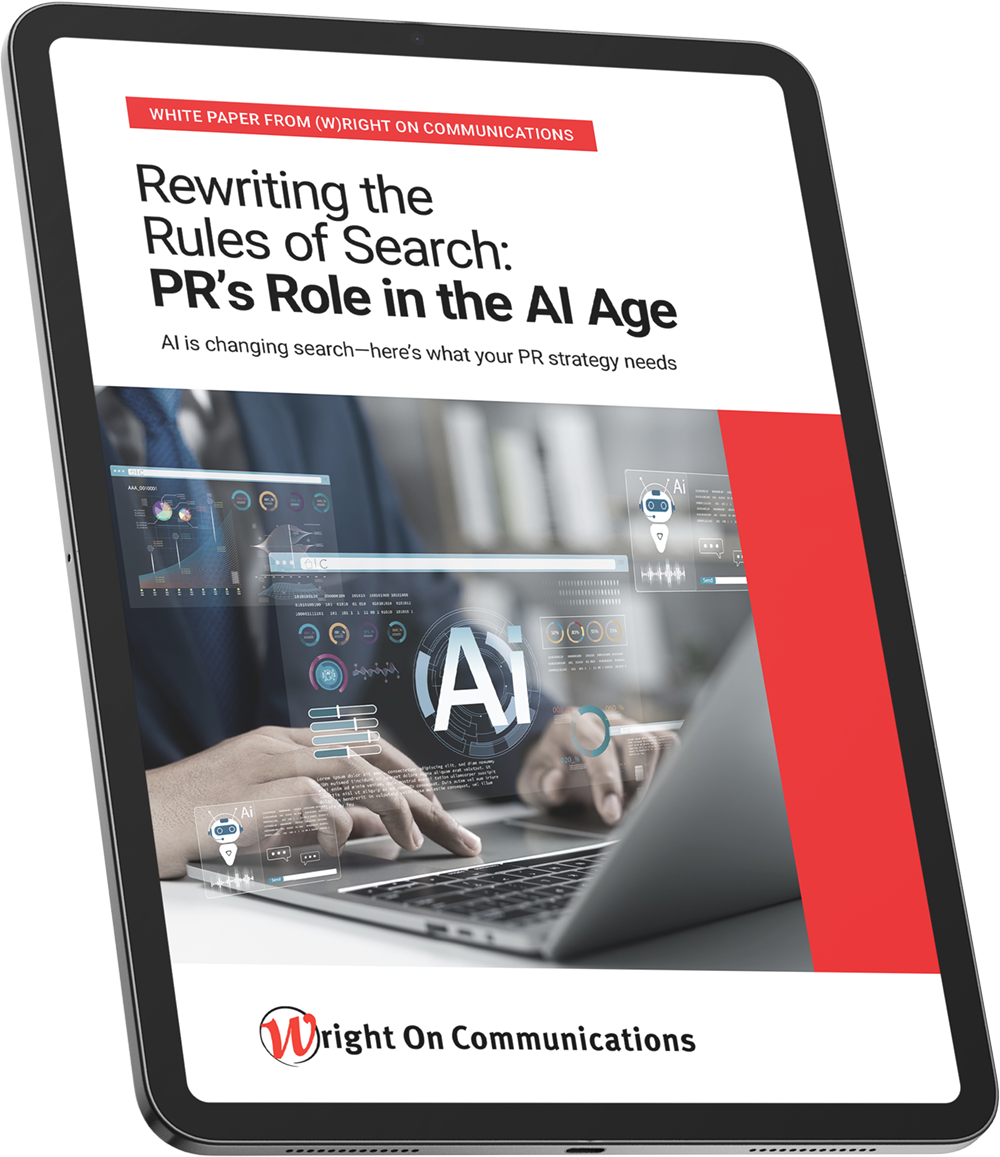If you’ve noticed a dip in organic traffic to your website lately, you’re not imagining things. AI search is changing the game—and fast. Now’s the time to switch to public relations for GEO—short for generative engine optimization.
Here’s why. Generative AI platforms like ChatGPT, Gemini and Perplexity aren’t just search engines. They’re answer engines. Instead of directing users to your website through a list of links, they deliver neatly summarized answers right in the search box. That means fewer clicks and fewer opportunities for your brand to show up in traditional ways.
So, what’s a forward-thinking brand to do?

The (W)right On Communications team has been watching this shift play out across our own channels and those of our clients—from cleantech and B2B to tourism and senior living. That’s why we’ve put together a free new white paper, “Rewriting the Rules of Search: PR’s Role in the AI Age.” If you’re responsible for your brand’s visibility, credibility or web performance, it’s essential reading.
But if you’re short on time, read on—we’ll break down the highlights for you here.
AI Search Isn’t the Future. It’s Now.
Over 55% of Google searches today display an AI-generated overview. And in one recent study, websites that ranked as a coveted top Google result got 34.5% fewer clicks on average than they used to. That’s a massive shift—and it’s already impacting brands that rely on strong search performance to drive leads, bookings or engagement.
And while AI tools like ChatGPT are still be referring some traffic, it’s less than what websites were getting from traditional search engines.
But here’s the upside: when users do click through from AI-powered results, they’re often more engaged and more ready to act.

What’s Changing (and Why to Pair PR and GEO)
AI tools don’t just index websites—they interpret and synthesize information from across the web. And when they do, they tend to prioritize:
In other words, AI prefers the kinds of content PR excels at producing.
Several studies have shown that AI tools frequently cite trusted, third-party sources—especially major news sites. That’s why media relations remain the ultimate third-party endorsement in today’s PR toolkit for GEO. (We break that down in more detail in our related post: The Value of Media Relations in 2025 and Beyond.)
5 Ways to Make Your PR AI-Friendly
Whether you lead communications for a solar tech startup or a luxury resort, here are five ways to future-proof your strategy:

A New Era of Measurement, Too
Tracking how AI tools send users to your site is possible—but it looks a little different from old-school SEO dashboards.
In our white paper, we walk you through how to use Google Analytics 4 to spot traffic from platforms like Perplexity.ai or ChatGPT, and even how to set up filters and regex tracking for more advanced insights.
Spoiler alert: Keep an eye on your “Direct” traffic. Some of those stealth visits may be coming from AI summaries that referenced your content.
Final Thought: PR’s Time to Shine
This moment is tailor-made for smart communicators. PR pros know how to tell clear, credible, human-centered stories—and that’s exactly what AI tools want to deliver.
So don’t panic about shrinking SEO results. Instead, evolve your strategy with public relations and GEO.
Let your PR program do what it does best: build trust, share expertise and connect with people (and algorithms!) in ways that matter.

Ready to go deeper?
Download our full white paper, “Rewriting the Rules of Search: PR’s Role in the AI Age,” for expert tips, real-world data, and a playbook to help your brand stay ahead.
Andrea Saxenhofer is Senior Communications Strategist at (W)right On Communications. She and the team are ready to blend public relations and GEO to raise your brand’s AI visibility. Let’s talk: (858) 886-7900 or info@wrightoncomm.com.
















